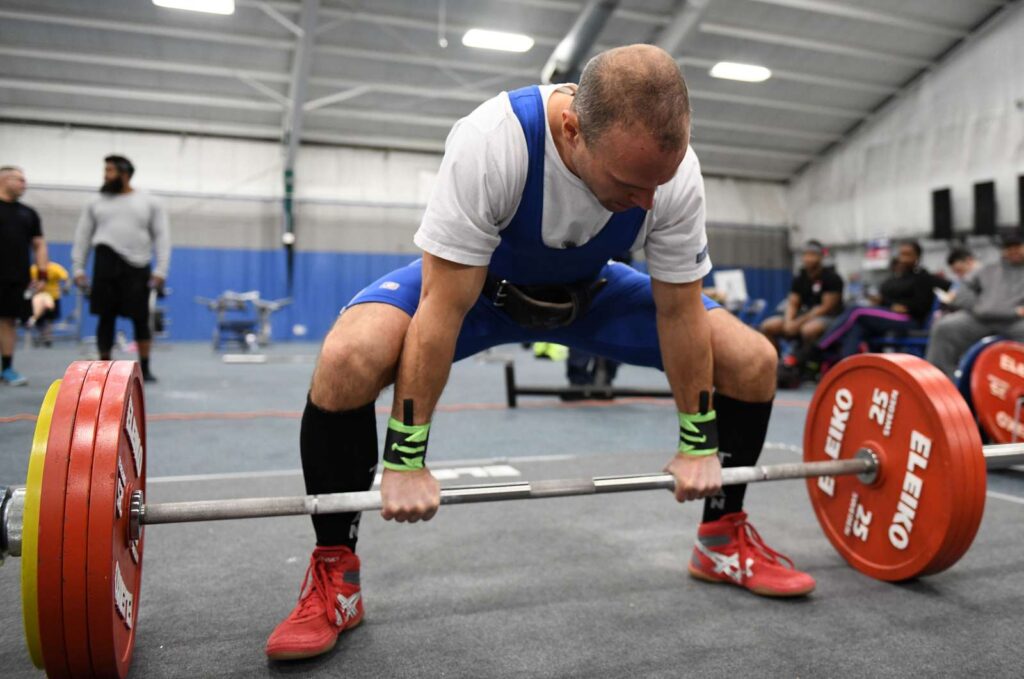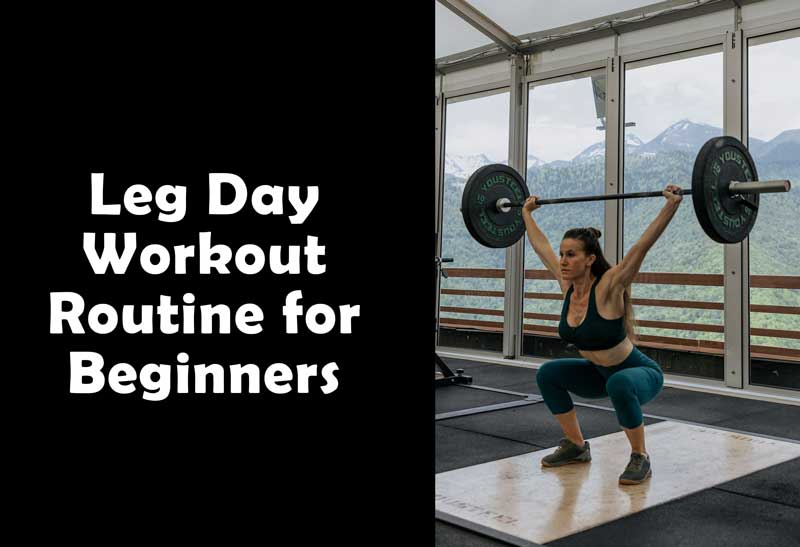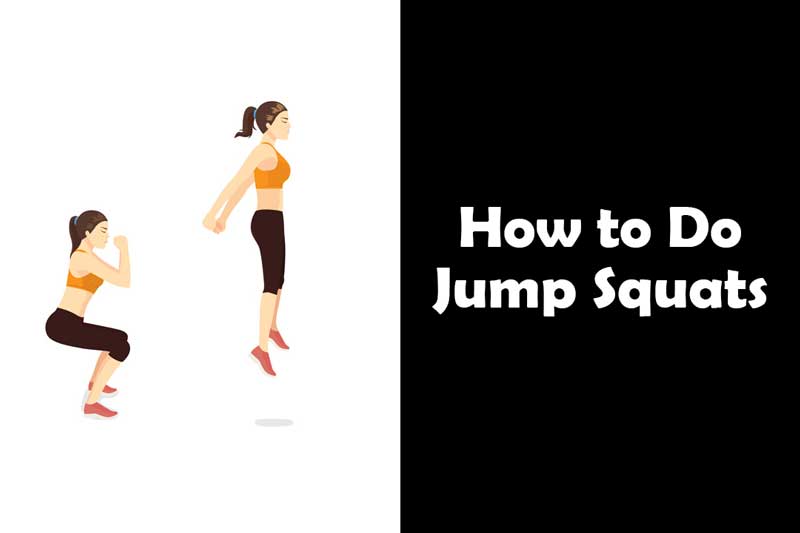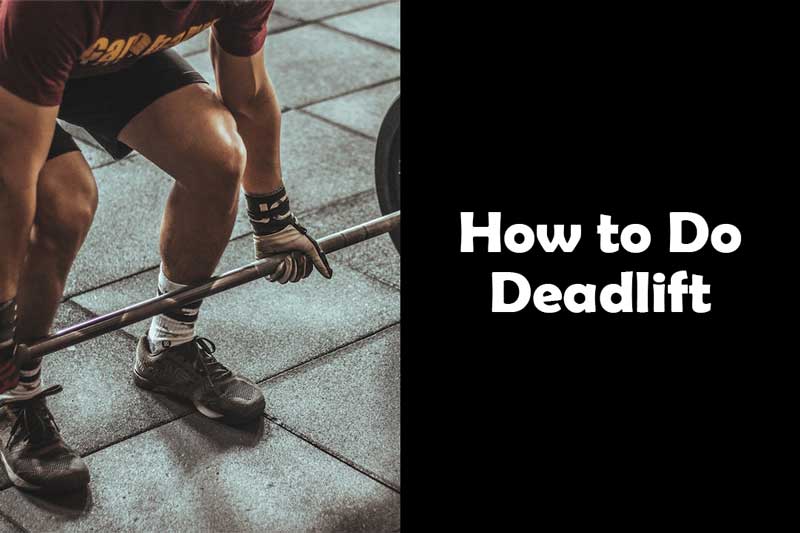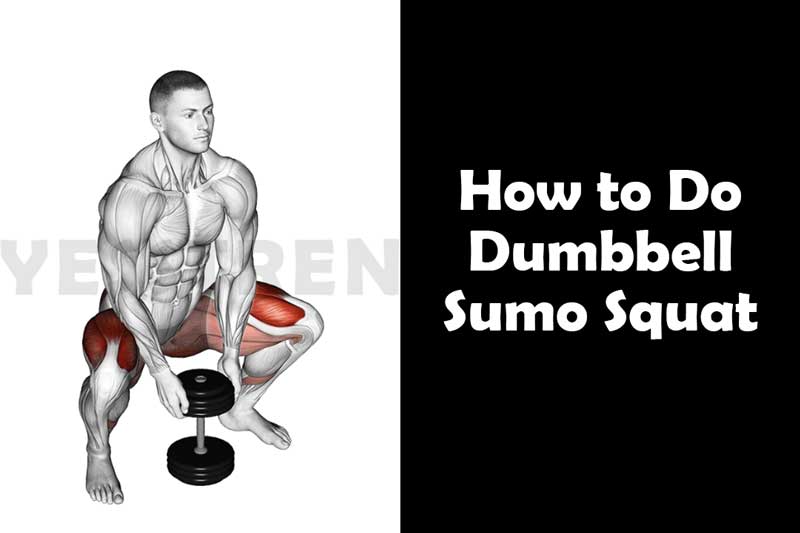Most of us probably know about the conventional deadlift. But what most don’t have heard about is Sumo Deadlift. This variation of deadlift can help build strength, improve your posture, and even prevent injury.
However, mastering the sumo deadlift is very important to get the most out of it. So, in this article, we’ll go over everything you need to know to perform a proper sumo deadlift, including its benefits and other variations.
What is the sumo deadlift?
The sumo deadlift is a variation of the conventional deadlift that involves a wider stance with the feet turned out.
This positioning places more emphasis on the hips and legs, allowing you to lift more weight with less strain on the lower back.
Sumo Deadlift vs Conventional Deadlift
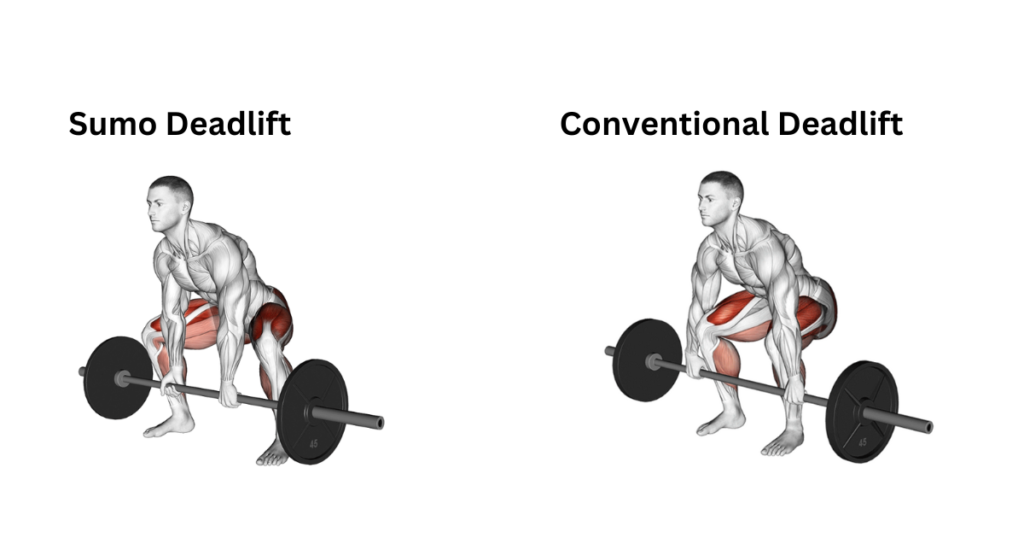
The conventional deadlift involves a narrower stance with the feet pointed straight ahead, and the hips starting higher.
The sumo deadlift, on the other hand, involves a wider stance with the feet turned out, and the hips starting lower.
While both variations work similar muscles, the sumo deadlift places more emphasis on the hips and legs, making it a popular choice for powerlifters and athletes with strong lower bodies.
Some people believe that sumo deadlift is easier than conventional deadlift, which can be true as range of motion is less in sumo deadlifts.
Setting up for the sumo deadlift
To set up for the sumo deadlift, follow these steps:
- Approach the bar and stand with your feet shoulder-width apart.
- Turn your toes out to a comfortable angle (usually around 45 degrees).
- Step your feet out wider than shoulder-width apart, with your shins touching the bar.
- Reach down and grip the bar with your hands just outside your legs, palms facing you.
- Sink your hips down until your shins are perpendicular to the ground.
- Take a deep breath and brace your core.
How to perform the Sumo Deadlift
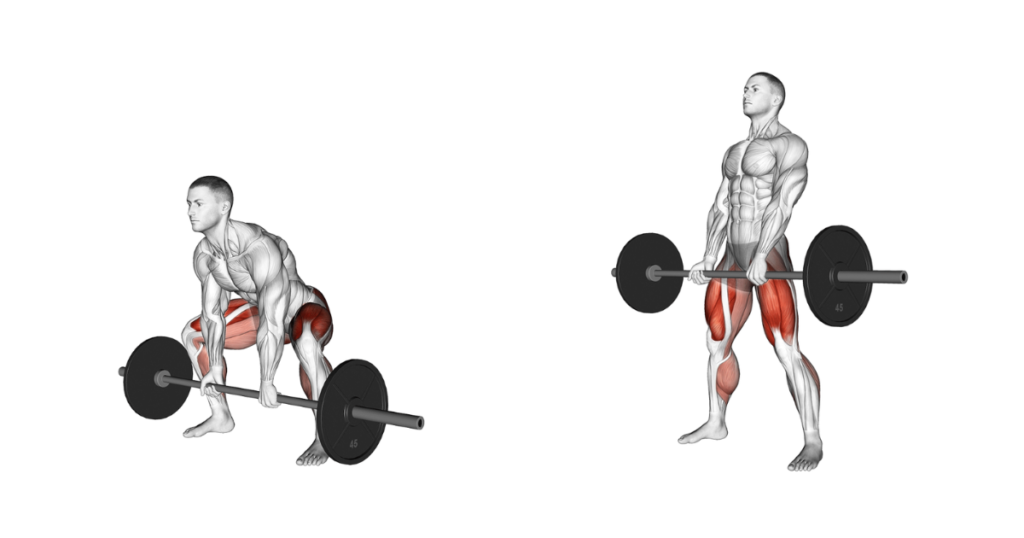
To perform the sumo deadlift, follow these steps:
- Approach the bar with your feet shoulder-width apart, toes pointing out at a 45-degree angle.
- Place your hands on the bar, just outside your knees.
- Then, drop your hips down and engage your core muscles to brace your spine. Keep your back straight and chest up.
- Push your knees out in front and drive your heels into the ground to initiate the lift.
- After that, lift the bar by extending your hips and knees. Keep the bar as close to your body as possible throughout the lift.
- Once the bar passes your knees, drive your hips forward to finish the lift. Make sure to maintain a straight back and avoid overextending your back at the top.
- Lower the bar back down to the ground by bending your knees and hips, keeping your back straight throughout the descent.
- Reset your starting position and repeat for the desired number of repetitions.
Some additional tips to keep in mind while performing the sumo deadlift:
- Make sure to use a weight that you can lift with good form. Don’t sacrifice technique for the sake of lifting heavier weights.
- Focus on engaging your glutes and quads to drive the lift, rather than relying solely on your lower back muscles.
- Keep your shins as close to the bar as possible throughout the lift to maintain balance and control.
- Practice good breathing techniques, inhaling before you lift and exhaling as you finish the lift.
With practice and proper form, the sumo deadlift can be a highly effective exercise for building strength and muscle mass in the lower body.
Muscles worked in the Sumo Deadlift
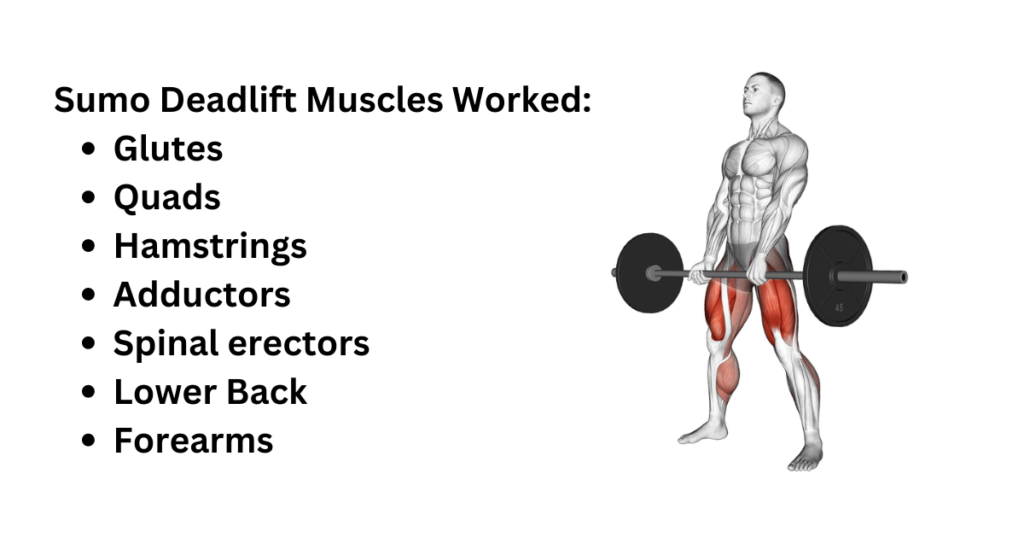
The sumo deadlift works a variety of muscles throughout the body, the major muscles involved are:
- Glutes: responsible for hip extension and powering the upward movement of the lift.
- Quads: provide additional support to the knee joint and help initiate the lift off the ground.
- Hamstrings: work in conjunction with the glutes to extend the hips and provide stability to the knee joint.
- Adductors: located on the inner thigh, these muscles assist in hip extension and stabilization of the pelvis during the lift.
- Spinal erectors: a group of muscles located along the spine that work isometrically to maintain a neutral spine position during the lift.
- Lower Back: work isometrically to maintain a neutral spine position and prevent rounding of the back.
- Forearms: responsible for grip strength and maintaining control of the barbell during the lift.
Benefits of sumo deadlifting
The sumo deadlift offers several benefits, including:
- Increased Strength: The sumo deadlift is a compound movement that targets multiple muscle groups including the glutes, quads, hamstrings, and lower back. Regularly performing this exercise can lead to increased overall strength and power.
- Compound Exercise: Sumo deadlifts are compound exercises that target and engage various muscles. This helps in burning more calories.
- Reduced risk of injury: Since the sumo deadlift places less stress on the lower back than the conventional deadlift, it can be a safer alternative for those with lower back pain or injuries.
- Improved hip mobility: The sumo deadlift requires a wider stance and more external rotation of the hips than the conventional deadlift, which can help improve hip mobility and flexibility.
- Better transfer to sports and other activities: The sumo deadlift mimics many movements that are common in sports and other activities, such as squatting down to pick up a heavy object. Furthermore, improving your sumo deadlift can translate to better performance in these activities.
- Increased muscle hypertrophy: The sumo deadlift targets the glutes and quads to a greater extent than the conventional deadlift, which can lead to increased muscle hypertrophy in these areas.
Overall, the sumo deadlift is a great exercise for building strength, improving mobility, and reducing the risk of injury.
Common mistakes and how to avoid them
Some common mistakes in the sumo deadlift include:
- Starting with the hips too high: This can make you arch your back, which is the wrong form and can hinder your posture.
- Not sinking the hips down enough: This can make it harder to lift.
- Allowing the knees to collapse inward: This can be very bad for your knees. Always keep your knees tight and stiff while lifting. Else, it can make your knees collapse inwards and the chances of injury increases.
- Rounding the back: This can lead to bad posture and can be bad for your back.
To avoid these mistakes, be sure to follow the proper setup and form cues, and start with lighter weight until you have mastered the technique.
Programming the sumo deadlift into your training
When programming the sumo deadlift into your training, it is important to consider your goals and current fitness level. Here are some general guidelines to follow:
- If you are new to lifting or have mobility issues, start with light weights and focus on mastering the technique.
- Aim to include the sumo deadlift in your routine 1-2 times per week.
- Perform 3-4 sets of 4-8 reps, using a weight that challenges you but allows you to maintain good form.
- Rest for 2-3 minutes between sets. Slowly you can decrease the rest to 1 minute.
Tips for improving your sumo deadlift technique
To improve your sumo deadlift technique, try the following tips:
- Start with the right stance: Your feet should be wider than shoulder-width apart, with your toes pointing outwards at around a 45-degree angle. Your shins should be as close to the bar as possible without touching it.
- Focus on keeping your back straight and tight: Engage your core and pull your shoulders back and down. This will help you maintain a neutral spine throughout the lift.
- Use your legs to initiate the movement: Push through your heels and drive your legs outward to lift the weight off the ground. Keep your hips close to the bar as you lift.
- Keep the bar close to your body: As you lift, make sure the bar stays as close to your shins as possible. This will help you maintain balance and control.
- Finish with your hips: Once the bar passes your knees, finish the lift by driving your hips forward and standing up tall. Don’t hyperextend your back at the top of the lift.
- Practice, practice, practice: Like any exercise, the sumo deadlift takes time and practice to master. Start with a lighter weight and focus on perfecting your technique before increasing the weight.
Remember, always prioritize good technique over the amount of weight you lift. Happy lifting!
Sumo deadlift variations
There are several variations of the sumo deadlift, including:
- Sumo deadlift high pull
- Sumo deadlift with bands or chains
- Sumo deadlift on a deficit
- Sumo deadlift with a pause
- Sumo deadlift with dumbbells or kettlebells
FAQs
1) Is the sumo deadlift harder than the conventional deadlift?
It depends on the individual, but many people find the sumo deadlift to be less taxing on the lower back.
2) Can I use the sumo deadlift for hypertrophy training?
Yes, the sumo deadlift can be an effective exercise for building muscle.
3) How wide should my stance be for the sumo deadlift?
Your stance should be wide enough to allow you to lift with proper form and engage your hips and legs effectively. Not very far and not too close, usually it is around a little over shoulder width apart.
4) Can I use straps for the sumo deadlift?
While some people prefer to use straps to help with grip, it is important to work on grip strength as well. You can use a strap if you think your grip is slipping.
5) Should I use a mixed grip for the sumo deadlift?
A mixed grip can help with grip strength, but it is important to alternate which hand is over and under the bar to prevent imbalances.
Conclusion
The sumo deadlift can be a valuable addition to your training routine, helping to build strength and improve your overall athleticism. Always aim for better form at first and then think about how much you are lifting, never ego lift. By following the proper setup and technique cues, you can reap the benefits of this powerful exercise while minimizing your risk of injury.

